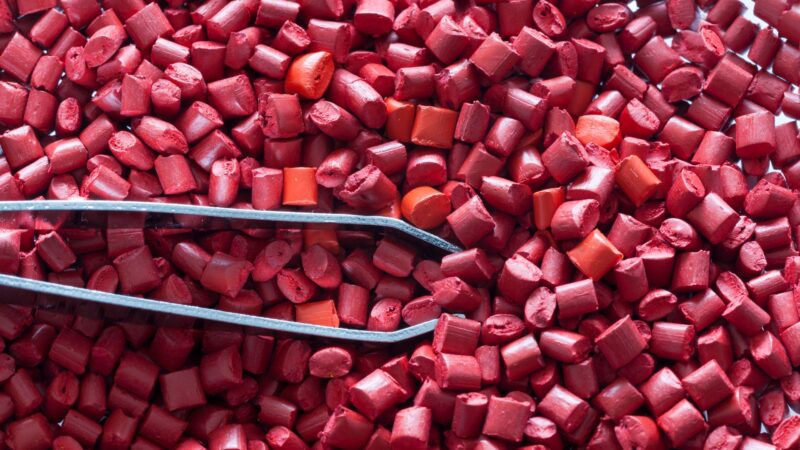Common Issues and Troubleshooting Tips for Fluid Bed Processors
Fluid bed processor is a versatile equipment widely used in various industries for drying, granulation, coating, and other processes. Despite their efficiency, operators may encounter common issues that can impact performance. Below are some of these issues and troubleshooting tips, along with relevant industry examples.
- Poor Fluidization:
- Issue: Inadequate fluidization during tablet coating leading to uneven coating thickness.
- Troubleshooting Tips:
- Air Distribution System Check:
- Inspect the air distribution system for clogs, irregularities, or improper adjustment of air distribution plates.
- Verify that the air supply is at the correct pressure and that the fluidization air is evenly distributed across the bed.
- Material Characteristics:
- Confirm that the material’s particle size distribution is within the specified range for optimal fluidization.
- Air Distribution System Check:
- Inadequate Drying or Processing:
- Issue: Insufficient drying of pharmaceutical granules affecting product quality.
- Troubleshooting Tips:
- Inlet Air Temperature Adjustment:
- Ensure that the inlet air temperature is set correctly for the specific drying requirements of the pharmaceutical granules.
- Product Discharge Inspection:
- Inspect the product discharge system for blockages, such as in the discharge valve or chute, which can impede the flow of processed material.
- Inlet Air Temperature Adjustment:
- Uneven Coating:
- Issue: Uneven coating of pharmaceutical tablets.
- Troubleshooting Tips:
- Spraying System Calibration:
- Calibrate the spraying system to ensure an even and consistent application of the coating material.
- Verify that the spray nozzle is not clogged and that the spray pattern is uniform.
- Fluidization Parameters Adjustment:
- Adjust fluidization parameters, including the fluidization air velocity and bed height, to achieve uniform fluidization across the entire bed.
- Spraying System Calibration:
- Product Clumping or Agglomeration:
- Issue: Agglomeration issues affecting the flowability of pharmaceutical powders.
- Troubleshooting Tips:
- Particle Size Distribution Analysis:
- Conduct a thorough analysis of the particle size distribution of the feed material.
- Adjust fluidization parameters to prevent over-agitation, which can contribute to agglomeration.
- Particle Size Distribution Analysis:
- Excessive Dust Emission:
- Issue: High dust levels during tablet compression leading to product contamination.
- Troubleshooting Tips:
- Leak Detection and Sealing:
- Inspect the system for leaks, especially around seals, filters, and discharge points.
- Implement effective sealing measures to minimize dust emissions.
- Airflow Adjustment:
- Adjust airflow rates to ensure effective capture of dust by the filtration system.
- Leak Detection and Sealing:
- Overheating:
- Issue: Excessive temperatures causing degradation in pharmaceutical products.
- Troubleshooting Tips:
- Temperature Control System Inspection:
- Verify the accuracy of temperature sensors and the proper functioning of the temperature control system.
- Adjust airflow rates or inlet air temperature to maintain the desired processing temperature.
- Temperature Control System Inspection:
- Product Discharge Issues:
- Issue: Difficulty in discharging coated pharmaceutical tablets.
- Troubleshooting Tips:
- Discharge System Examination:
- Inspect the discharge system, including valves and chutes, for any blockages or irregularities.
- Adjust parameters such as bed height or vibration to achieve the desired flow characteristics.
- Discharge System Examination:
- Instrumentation and Control Issues:
- Issue: Inaccurate instrumentation affecting the quality of pharmaceutical products.
- Troubleshooting Tips:
- Calibration Verification:
- Regularly verify and calibrate sensors and instruments used for monitoring temperature, airflow, and other critical parameters.
- Address any issues with loose connections or damaged wiring promptly.
- Calibration Verification:
9. Powder Attrition:
- Issue: Excessive attrition of pharmaceutical powders during fluidization.
- Troubleshooting Tips:
- Airflow Optimization:
- Example: High airflow rates can contribute to powder attrition. Optimize airflow parameters to minimize abrasion of sensitive pharmaceutical powders.
- Material Handling:
- Example: Delicate APIs (Active Pharmaceutical Ingredients) may be prone to attrition. Handle materials carefully during loading and processing.
- Airflow Optimization:
10. Inconsistent Residence Time:
- Issue: Variations in the residence time affecting the uniformity of the pharmaceutical product.
- Troubleshooting Tips:
- Bed Height Adjustment:
- Example: Inconsistent bed height can lead to variations in residence time. Regularly adjust bed height to maintain uniform processing conditions.
- Airflow Uniformity:
- Example: Non-uniform airflow can result in uneven residence time. Check and adjust the air distribution system to ensure consistent fluidization.
- Bed Height Adjustment:
11. Inadequate Coating Adhesion:
- Issue: Poor adhesion of coating material on pharmaceutical tablets.
- Troubleshooting Tips:
- Surface Preparation:
- Example: Surface irregularities on tablets can hinder coating adhesion. Ensure proper surface preparation, such as smoothing or pre-coating, before the main coating process.
- Optimization of Coating Solution:
- Example: Inconsistent coating material viscosity can impact adhesion. Optimize the coating solution parameters, including viscosity and solids content.
- Surface Preparation:
12. Electrostatic Charging:
- Issue: Electrostatic charging leading to uneven distribution of coating or granulation.
- Troubleshooting Tips:
- Grounding Measures:
- Example: In the presence of insulating materials, electrostatic charging may occur. Implement grounding measures to dissipate static charges.
- Humidity Control:
- Example: Low humidity levels can exacerbate electrostatic issues. Control humidity in the processing area to minimize static charge build-up.
- Grounding Measures:
13. Cross-Contamination Concerns:
- Issue: Potential for cross-contamination in multi-product facilities.
- Troubleshooting Tips:
- Cleaning Validation:
- Example: In facilities producing multiple pharmaceutical products, implement thorough cleaning validation protocols between batches to prevent cross-contamination.
- Material Segregation:
- Example: Segregate materials based on their characteristics and risk of cross-contamination during processing.
- Cleaning Validation:
14. Material Loss During Processing:
- Issue: Excessive material loss, especially with costly pharmaceutical ingredients.
- Troubleshooting Tips:
- Material Handling Practices:
- Example: Optimize material handling practices to minimize spillage and loss during loading and unloading.
- Efficient Discharge Systems:
- Example: Upgrade discharge systems to reduce material loss during the product discharge phase.
- Material Handling Practices:
15. Non-Uniform Particle Size Distribution:
- Issue: Inconsistencies in particle size distribution impacting the final product quality.
- Troubleshooting Tips:
- Screening and Classification:
- Example: Implement effective screening and classification mechanisms to ensure a uniform particle size distribution.
- Process Parameter Adjustment:
- Example: Adjust processing parameters such as fluidization intensity and spray rate to achieve the desired particle size distribution.
- Screening and Classification:
16. API Degradation:
- Issue: Degradation of active pharmaceutical ingredients (APIs) due to prolonged exposure to elevated temperatures.
- Troubleshooting Tips:
- Temperature Control Optimization:
- Example: APIs sensitive to temperature variations may degrade during processing. Optimize temperature control parameters to minimize heat exposure, ensuring the stability of the active ingredients.
- Temperature Control Optimization:
17. Inadequate Mixing:
- Issue: Poor mixing leading to variations in product composition.
- Troubleshooting Tips:
- Agitation Enhancement:
- Example: In the production of blends, inadequate mixing can result in uneven distribution of components. Enhance agitation mechanisms or adjust mixing times to achieve homogeneity.
- Material Loading Techniques:
- Example: The method of loading materials into the fluid bed can affect mixing. Review and optimize material loading techniques to promote uniform mixing.
- Agitation Enhancement:
18. Inlet Air Filter Contamination:
- Issue: Contamination of pharmaceutical products due to compromised inlet air quality.
- Troubleshooting Tips:
- Regular Filter Inspection:
- Example: If the inlet air filter is clogged or compromised, contaminants may enter the processing chamber. Regularly inspect and replace filters to maintain air quality.
- Pre-Filtration Systems:
- Example: Implement pre-filtration systems to capture larger particles and prevent them from reaching the main filters, reducing the risk of contamination.
- Regular Filter Inspection:
19. Material Segregation During Loading:
- Issue: Segregation of different-sized particles during the loading process.
- Troubleshooting Tips:
- Uniform Loading Techniques:
- Example: Uneven loading of materials with different particle sizes can lead to segregation. Utilize uniform loading techniques to ensure consistent distribution across the fluidized bed.
- Optimized Loading Speed:
- Example: High loading speeds may contribute to particle separation. Adjust loading speeds to minimize the potential for segregation.
- Uniform Loading Techniques:
20. CIP (Clean-in-Place) System Malfunction:
- Issue: Malfunction of the clean-in-place system compromising hygiene standards.
- Troubleshooting Tips:
- System Integrity Checks:
- Example: In multi-product facilities, the CIP system should be thoroughly checked for its integrity. Regularly inspect and validate the CIP system to ensure effective cleaning between batches.
- Automation and Monitoring:
- Example: Implement automated monitoring systems to detect malfunctions in the CIP system in real-time. This enhances reliability and reduces the risk of manual errors.
- System Integrity Checks:
21. Inconsistent Airflow Distribution:
- Issue: Non-uniform airflow across the fluidized bed impacting process homogeneity.
- Troubleshooting Tips:
- Airflow Calibration:
- Example: Non-calibrated airflow distribution may lead to uneven processing. Regularly calibrate airflow distribution systems and conduct validation checks.
- Distributor Plate Maintenance:
- Example: Damaged or worn distributor plates can disrupt airflow patterns. Schedule routine maintenance and replace distributor plates as needed.
- Airflow Calibration:
Fluid bed processor troubleshooting in the pharmaceutical applications demands a comprehensive approach, considering various factors that may affect product quality, uniformity, and compliance. Regular monitoring, meticulous attention to detail, and adherence to regulatory guidelines are paramount for sustaining optimal performance in pharmaceutical manufacturing processes. Continuous improvement through feedback mechanisms and ongoing training of personnel contribute to the robustness of fluid bed processing systems in the pharmaceutical industry.






